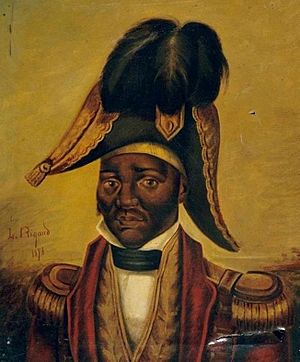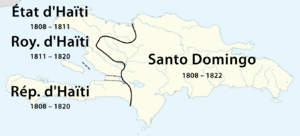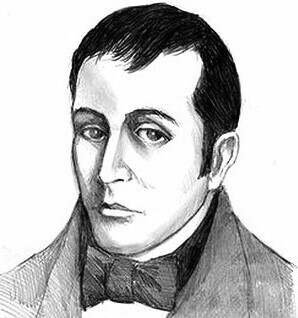Haitian occupation of Santo Domingo facts for kids
Quick facts for kids
Republic of Haiti
République d'Haïti (French)
|
|||||||||
|---|---|---|---|---|---|---|---|---|---|
| 1822–1844 | |||||||||
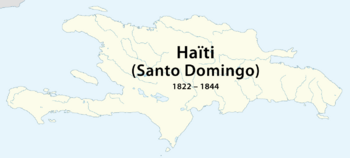
Map of Hispaniola from 1822 to 1844
|
|||||||||
| Status | Annexed to Haiti | ||||||||
| Capital | Santo Domingo | ||||||||
| Common languages | French (official) Spanish |
||||||||
| Demonym(s) | Dominican | ||||||||
| Government | Military occupation | ||||||||
| President | |||||||||
|
• 1822–1843 (first)
|
Jean-Pierre Boyer | ||||||||
|
• 1843–1844 (last)
|
Charles Rivière-Hérard | ||||||||
| Historical era | Early 19th Century | ||||||||
|
• Established
|
February 9, 1822 | ||||||||
|
• Dominican Declaration of Independence
|
January 16, 1844 | ||||||||
|
• Dominican War of Independence (end of occupation)
|
February 27, 1844 | ||||||||
| Currency | Gourde (HTG) | ||||||||
| ISO 3166 code | HT | ||||||||
|
|||||||||
| Today part of | Dominican Republic | ||||||||
The Haitian occupation of Santo Domingo was when Haiti took control of the eastern part of the island of Hispaniola. This period lasted for 22 years, from February 9, 1822, to February 27, 1844. At that time, the eastern part was known as the Republic of Spanish Haiti.
Many Haitians saw this as a way to unite the island and protect their country. They wanted to prevent anyone from trying to bring back slavery. However, people in the eastern part, now known as the Dominican Republic, saw it as a military invasion.
During the occupation, Haitian rule changed many things. They limited the use of the Spanish language and the Catholic religion. They also made strict rules about work and how wealth was shared. This led to a lot of unhappiness among the Dominicans. Eventually, this unhappiness grew into a strong movement for independence. The Dominicans finally gained their freedom in February 1844.
In the Dominican Republic, Independence Day is celebrated on February 27. This day marks the start of their fight against the Haitian occupation.
Contents
History of the Occupation
By the late 1700s, the island of Hispaniola was split into two parts. The western side, called Saint-Domingue, was controlled by France. The eastern side, called Santo Domingo, was controlled by Spain.
In the 1790s, big rebellions started in the French part. Leaders like Toussaint Louverture and Jean-Jacques Dessalines led these uprisings. They eventually forced the French out and Haiti became an independent country. After Haiti's independence, many French people who remained were killed. Meanwhile, the Spanish side of the island was also getting ready to separate from Spain.
First French Control of Hispaniola
In the late 1700s, Saint-Domingue became a very rich French colony. It produced a lot of sugar using enslaved African people. Sugar was a very important product in Europe. In contrast, the Spanish side, Santo Domingo, was not doing well. Its economy was slow, and much of the land was not used for farming. The population was also much smaller than in Saint-Domingue.
In 1795, Spain gave its part of the island to France. This happened after a war between France and Spain. However, France did not immediately take control because of the chaos in Saint-Domingue. There were many uprisings by enslaved people and free people of color.
In 1801, Toussaint Louverture, who was still loyal to France at the time, took control of Santo Domingo. He ended slavery in the eastern part of the island for the first time. In 1804, Jean-Jacques Dessalines declared Haiti's independence from France. Even though France lost Saint-Domingue, their forces on the Spanish side managed to fight off Dessalines' attacks. But in 1808, the people on the Spanish side revolted. With help from the British navy, they ended French control of Santo Domingo in 1809. Spanish rule was then brought back.
This short time when the whole island was officially under French rule became a key reason for the Haitians. They believed it justified their goal to unite the island under their own rule.
Haitian Invasion of 1805
In February 1805, Haitian forces led by Jean-Jacques Dessalines invaded the Spanish side. They were against the French allowing slave raids. Dessalines' army could not defeat the Spanish-French defenses in Santo Domingo. They also heard that a French fleet was coming to help.
So, Dessalines and Henri Christophe marched through towns like Santiago and Moca. Meanwhile, Alexandre Pétion invaded Azua. On their way back from Santo Domingo, Dessalines' forces reached Santiago on April 12, 1805. In Santiago, Haitian forces set fire to the town, including churches. They killed about 400 people and took others as prisoners to Haiti. More people were killed in other towns like Monte Plata and La Vega. Many survivors fled to other areas. Prisoners were forced to go to Haiti and work on plantations. In just a few weeks, a large number of people from Santo Domingo were killed by Haitian soldiers.
Haiti's Internal Conflicts (1806-1820)
On October 17, 1806, Dessalines was killed by his own generals, Henri Christophe and Alexandre Pétion. After this, Christophe and Pétion could not agree on who should lead Haiti. So, they split the country. Christophe took control of the North, calling it the "Kingdom of Haiti." Pétion took the South, calling it the "Republic of Haiti." They immediately started fighting each other.
These internal wars lasted until 1820. That's when Haitian president Jean-Pierre Boyer finally united both the North and South of Haiti. After uniting his own country, Boyer then looked towards the struggling Spanish side of the island.
Santo Domingo Gains Independence from Spain (1821)
On November 9, 1821, Spanish rule over Santo Domingo ended. A group led by José Núñez de Cáceres, a former administrator, declared independence from Spain. This new nation was called the Republic of Spanish Haiti. The name "Haiti" was the original indigenous name for the island. On December 1, 1821, this new nation asked to join Gran Colombia, a large country in South America.
Why Haiti Occupied Santo Domingo
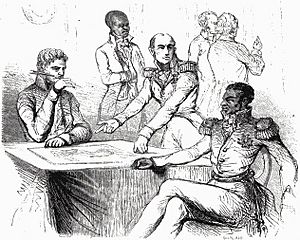
Some Dominican politicians and military officers wanted to unite with Haiti. They hoped for stability under Haitian President Jean-Pierre Boyer. They were also impressed by Haiti's power and wealth at the time. Many people in the northern Cibao region also supported joining Haiti instead of Gran Colombia.
President Boyer had his own goals for the island. He believed the island should be "one and indivisible." He wanted to keep Haiti independent from France or Spain. He also wanted to protect the freedom of former enslaved people.
Boyer was secretly talking with France to prevent an attack. France had 14 warships near Haiti's capital. Boyer agreed to pay France a huge amount of money, 150 million gold francs. This money was meant to pay back former French slave owners. This meant Haiti would have to pay for its freedom. The Dominicans did not know about this agreement.
Many Black people supported joining Haiti. They believed Boyer's government would bring social changes, like ending slavery. White and mixed-race Dominicans were divided on the idea. After plans with Gran Colombia fell through, and with promises of support from Boyer, Núñez de Cáceres leaned towards Haiti. Some Dominican military officers also started to support unification. On November 15, 1821, leaders of several Dominican towns, like Dajabón, even raised the Haitian flag.
The Dominican nationalists who were against uniting the island were at a big disadvantage. Their army was small and not well-trained. Haiti's population was much larger, and its economy was stronger. The Haitian military was also very experienced from years of fighting. They were determined not to lose any battles.
The Occupation Begins
After getting support from several Dominican leaders, Boyer marched into the country with 12,000 soldiers in February 1822. The Dominican side had a much smaller, untrained army and about 70,000 people. Haiti had about 600,000 people. On February 9, 1822, Boyer officially entered Santo Domingo, the capital city. The whole island was now under one government.
Boyer divided the island into six departments, similar to states. This period brought many changes. Large areas of land were taken by the government. Efforts to force people to grow crops for export often failed. Military service was required, and the use of the Spanish language was limited. Traditional customs were also suppressed. There were also ongoing rivalries between the Haitian elite and the general Black population.
To pay the large debt to France (which was later lowered to 60 million francs), the Haitian government placed heavy taxes on the Dominicans. Haiti's army often took food and supplies from people because they couldn't get enough provisions. Attempts to change land ownership caused problems. Many people did not like being forced to grow certain crops under Boyer's new laws. In rural areas, the Haitian government often struggled to enforce its rules.
The effects of the occupation were felt most strongly in the city of Santo Domingo. This is where the independence movement began. Dominican citizens often had more rights than Haitian peasants under Boyer's laws.
Haiti's constitution also prevented white elites from owning land. Many wealthy families lost their properties. They often moved to places like Cuba or Puerto Rico, which were Spanish at the time. Haitian officials sometimes encouraged this, as they could then take over the lands. The Haitians also took all church property. They sent away foreign priests and cut ties with the Vatican. Santo Domingo's university, the oldest in the Americas, had to close. This meant many educated people left the country.
Even though the occupation brought a constitution similar to the United States' and ended slavery in what became the Dominican Republic, some forms of forced labor still existed in Haitian society. Black people who had been enslaved in other places, like Puerto Rico, sometimes escaped to Santo Domingo. They found freedom under Haitian law, seeing it as a "free country" after Haiti took control.
However, many rules made Dominicans feel like second-class citizens. These included limits on movement, not being able to hold public office, night curfews, and the closing of the university. All these things led to strong movements wanting to separate from Haiti.
Dominican Resistance and Independence
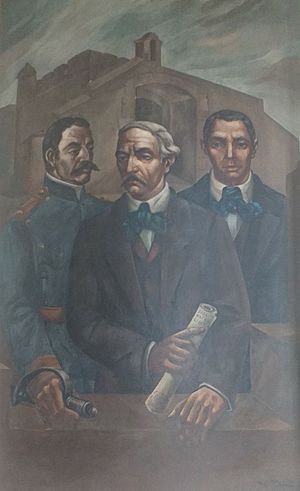
In 1838, a group of educated Dominicans formed a secret society called La Trinitaria. Its leaders included Matías Ramón Mella, Juan Pablo Duarte, and Francisco del Rosario Sánchez. Their goal was to gain independence from Haiti. When they revealed their plans, the new Haitian president, Charles Rivière-Hérard, exiled or imprisoned the main members of La Trinitaria.
At the same time, Buenaventura Báez, a wealthy businessman, was talking with the French about making the Dominican Republic a French protectorate. To stop Báez's plan, the Trinitarios declared independence from Haiti on February 27, 1844. They were supported by Pedro Santana, a rich rancher who had his own private army. This event marked the beginning of the Dominican War of Independence.
Aftermath and Dominican Independence
After gaining independence, Dominican patriots had to fight many battles to keep their freedom. Haitian soldiers tried repeatedly to regain control, but the Dominicans won every time. These efforts helped to make their independence strong, lasting from 1844 to 1856. Haiti's military forces became weaker over time due to constant power struggles within Haiti.
Border Disputes
Some towns and cities near the border, like Hincha (now Hinche) and Las Caobas (now Lascahobas), became isolated from the Dominican capital. Haitian influence grew in these areas. The Haitian currency was used, and Haitian Creole was spoken alongside Spanish. These towns eventually became part of Haiti, though the border was often disputed. The final border was set in 1929 and marked in 1935–1936.
Governors During the Occupation
- Jérôme-Maximilien Borgella (February 9, 1822 – 1832)
- Bernard-Philippe-Alexis Carrié (1832 – February 1843)
- Charles Rivière-Hérard (1843)
- Léo Hérard (1843 – February 27, 1844)
See also
 In Spanish: Ocupación haitiana de Santo Domingo para niños
In Spanish: Ocupación haitiana de Santo Domingo para niños
- Dominican War of Independence
- Haitian Revolution
- History of the Dominican Republic
- History of Haiti



